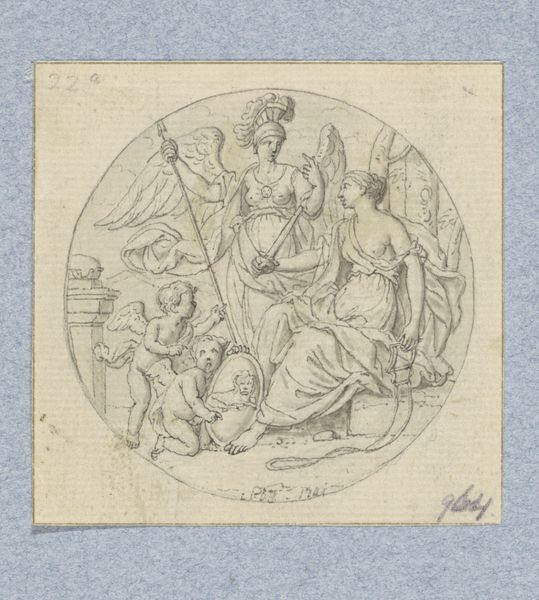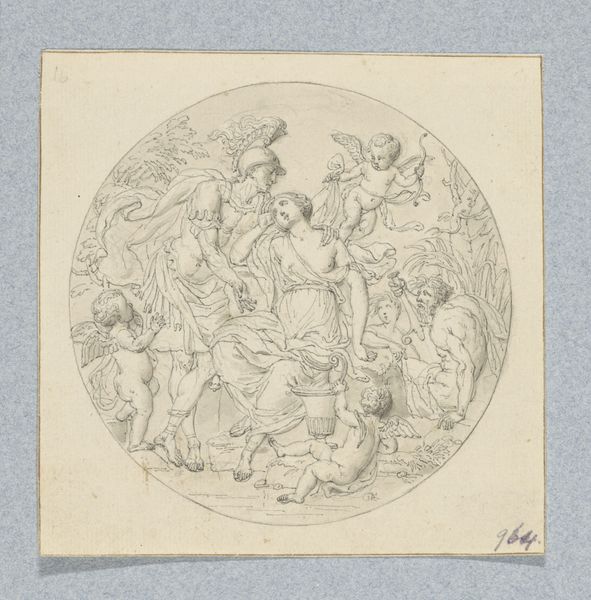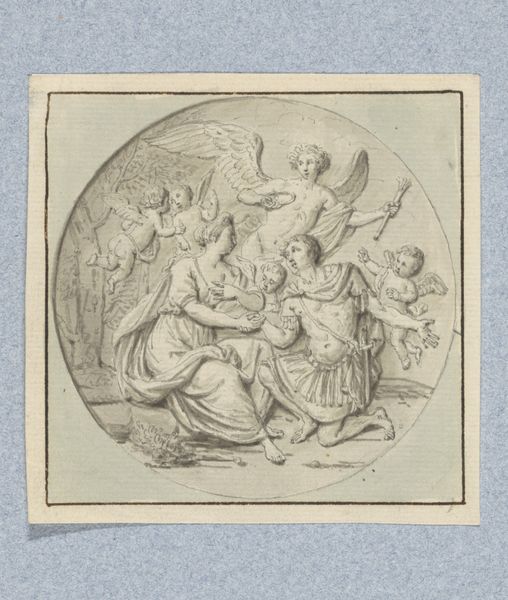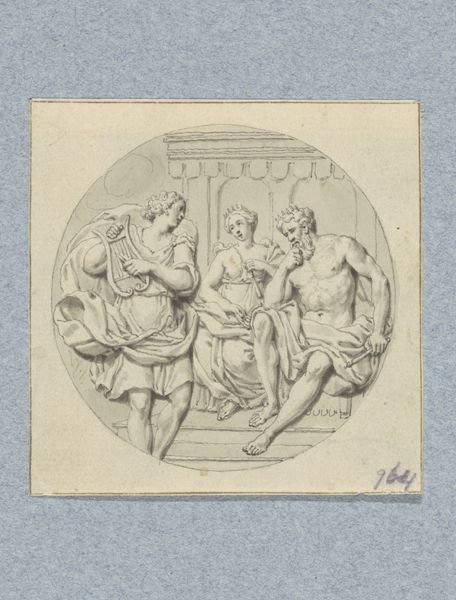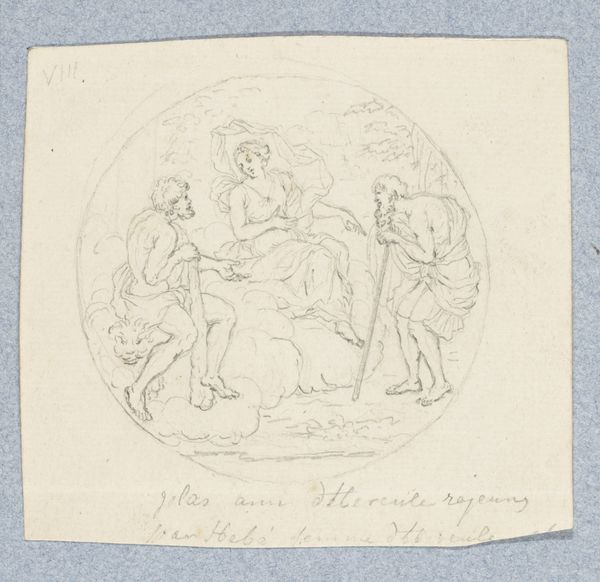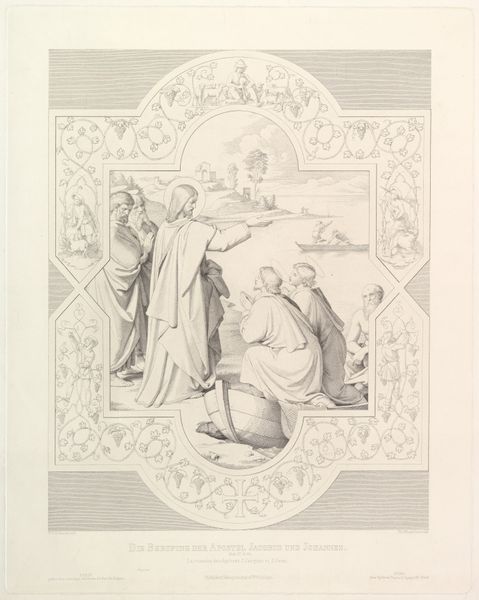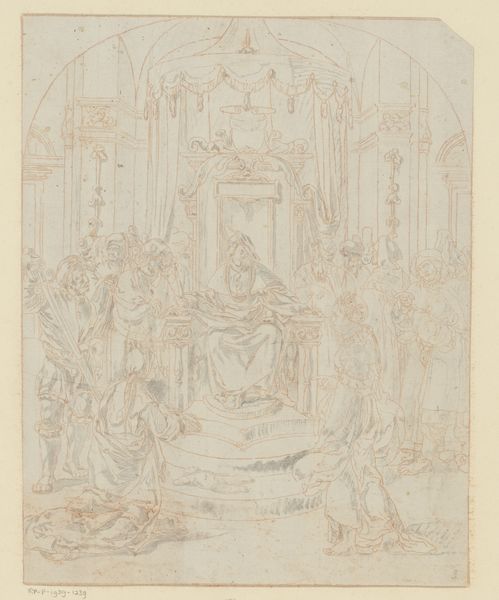
Esther voor Ahasverus (in doos met 43 tekeningen) 1703 - 1775
0:00
0:00
louisfabritiusdubourg
Rijksmuseum
drawing, paper, ink, pen
#
drawing
#
narrative-art
#
figuration
#
paper
#
11_renaissance
#
ink
#
pen
#
genre-painting
#
history-painting
#
academic-art
Dimensions: height 117 mm, width 117 mm
Copyright: Rijks Museum: Open Domain
Louis Fabritius Dubourg sketched this drawing, Esther Before Ahasuerus, sometime in the 18th century. Here, we observe Esther kneeling before King Ahasuerus, who extends his scepter towards her. This gesture is pivotal, for without it, Esther’s unauthorized presence before the king could mean death. The scepter, therefore, symbolizes mercy and royal favor. The act of extending a scepter is not unique. We see echoes of it in ancient Egyptian art, where pharaohs wielded similar symbols of power. Think, too, of the Christian tradition, where a king might extend grace, not a scepter, but still signifying salvation. It’s fascinating how these symbols recur, adapting to different cultural narratives, yet retaining their core meaning. Such visual language speaks to our collective memory, triggering deep-seated responses. The tension, the hope, the sheer will to survive—these are not just historical; they resonate with our own struggles and aspirations, revealing the enduring power of images to evoke profound emotional experiences. The scepter, then, is more than just a royal object; it's a conduit of hope, continually repurposed across time.
Comments
No comments
Be the first to comment and join the conversation on the ultimate creative platform.
